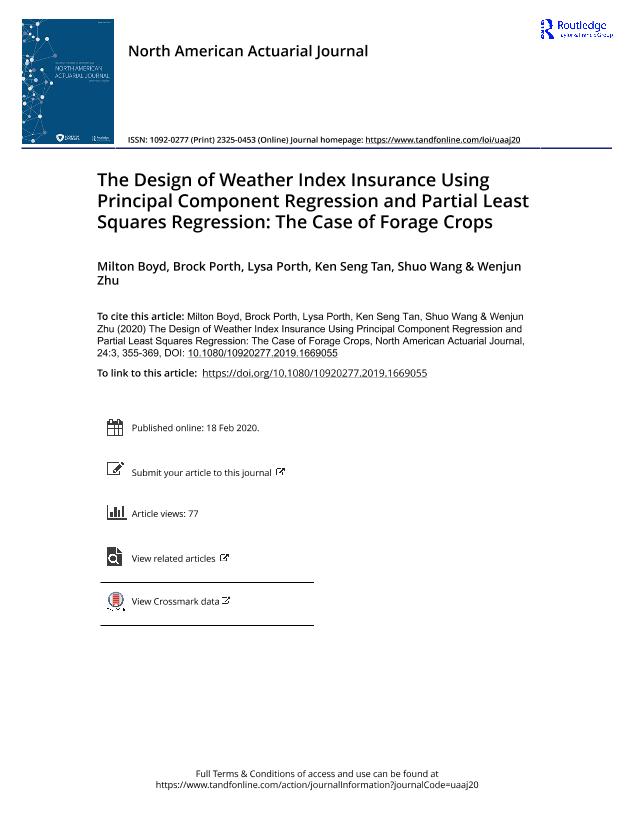Other categories: 6
The Design of weather index insurance using principal component regression and partial least squares regression : the case of forage crops

Contenido multimedia no disponible por derechos de autor o por acceso restringido. Contacte con la institución para más información.
Other categories: 6

